Tuesday 10th September 2024
With an aging population and the requirement of care homes always increasing, it is paramount that all aspects of fire safety are taken into consideration when fire risk assessments, and even individual care plans are being assessed. Fire Doors in care homes are a critical part of the fire strategy and must be correctly installed and maintained to prevent the spread of fire and smoke.
Why are fire doors in care homes important ?

Unlike high street stores and office blocks, it is very unlikely that everyone would be able to evacuate simultaneously in a care home. For a variety of reasons such as mobility issues, or physical or mental disability. Common practice within a care home setting is a phased or horizontal evacuation when the initial alarm has sounded. Evacuation of this nature can be the most safe and effective. Especially with appropriate fire equipment which is correctly installed and maintained. This can include correctly fitted fire doors and hardware. Correctly fitted fire doors ensure that staff are able to evacuate those with mobility issues, without risk. Acquiring appropriate evacuation devices in order to provide safe evacuation.
Essentially the primary purpose of a fire rated door, is to physically place barriers and compartmentalise a building. By installing purpose-built fire doors correctly, it slows down the progression of a fire. As well as limiting the damage to the property before the emergency services are able to attend the scene. During this time, fire doors help to contain the fire long enough to provide valuable extra minutes. Therefore allowing occupants to evacuate safely unaided or with the assistance of staff.
What fire doors are required in a care setting?
Fire doors should have an appropriate fire rating specified in a fire risk assessment. Fire doors can either be 30 minute or 60-minute rating. General guidance for care homes usually advise a 60-minute fire rated fire door. However, it is critical that a fire risk assessment is actioned as it is specific to that particular environment. It takes into consideration the residents and the additional fire risks within the building. Each of the doors should also have fire and smoke seals installed in the door or frame. Ensuring that escape routes are not compromised during the evacuation process, and smoke inhalation is reduced significantly.
Fire doors & accessibility
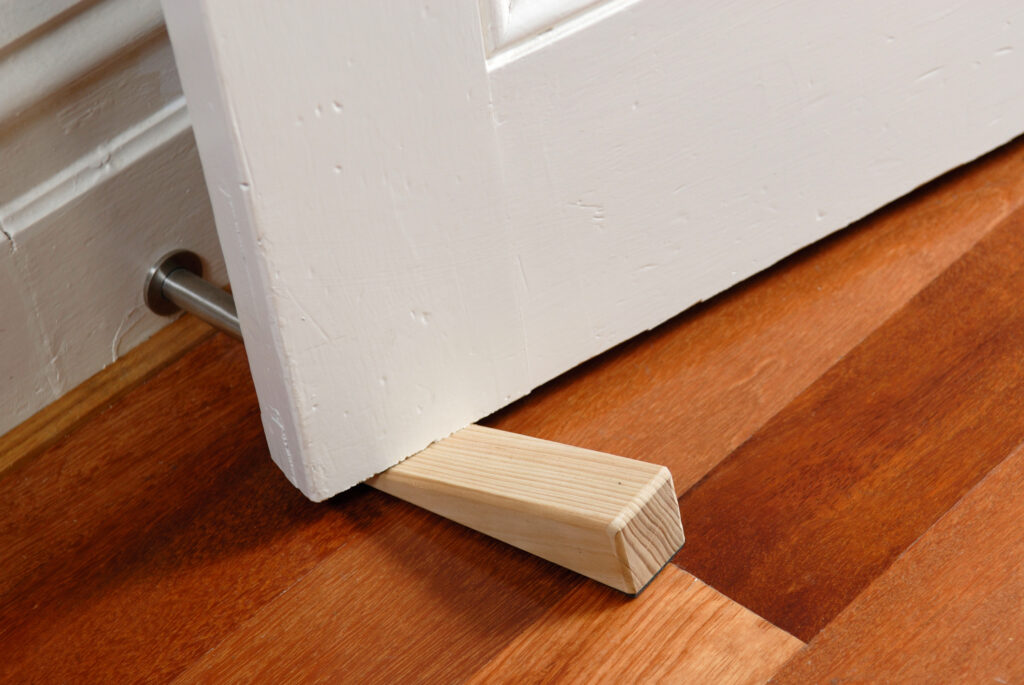
In order for a fire door to perform its purpose properly, the door must be able to close completely. Accessibility is key for a care home and fire doors can cause issues where this is concerned as they can be very heavy to operate. Most of the residents do not have the strength to open a fire door. Propping, wedging, or tying a fire door open should never be practised. However, specialist devices such as overhead door closers and retaining devices can assist with this.
Overhead door closers ensure that a fire door closes fully. This allows for proper compartmentalisation to take place, and contains a fire within a room for a specified time period. To assist in maintaining accessibility, care homes may also use fire door holders, or retainers. These provide a legal solution to hold open fire doors. Upon receiving a signal from a fire alarm panel or sounder, the retainer device will release the door. Overhead door closers can be used in conjunction with door holders and retainers, ensuring the door closes completely.
Accessibility solutions for care homes
The Fireco Pro System and the Agrippa products improve accessibility making it easier for the individuals that use them. Improving ventilation within a building can also be achieved by installing suitable fire door retaining systems.
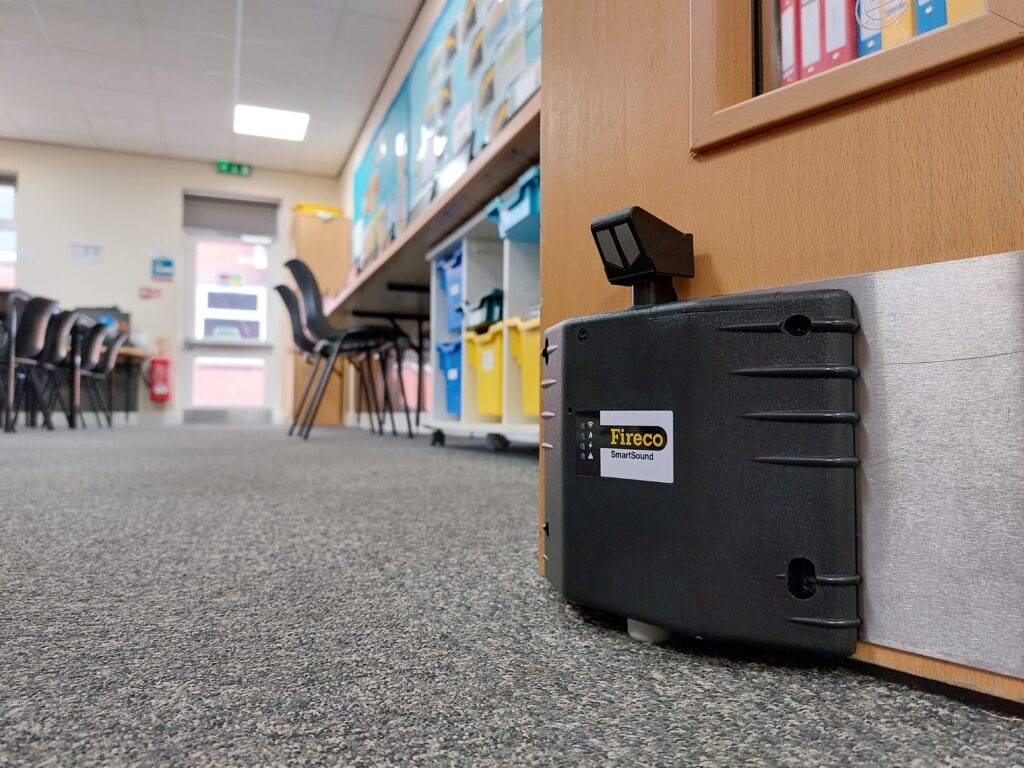
The Fireco Pro System provides a solution for fire doors where doors can be left open safely. This means air circulation can be improved, but fire doors will still close and provide protection to residents in the event of an emergency. Directly linked to the fire alarm panel system in the premises, fire doors are released to close when the alarm sounds. A Fireco Pro system can consist of a variety of different products. This can include, retainers, door closers, door holders, and the hub itself. Once installed, the Fireco Pro system provides an effective fire door retainer and closer solution.

Whereas, the Geofire Agrippa provides a simple retrofit solution, with no wiring at all. ‘Listening’ for the alarm system, the Agrippa is acoustically triggered when the alarm sounds. Upon hearing the alarm, the magnet disengages and allows the door to close with the aid of a door closer.
Fire doors are heavy and residents can benefit significantly from having simple accessibility solutions like this fitted.
Fire door maintenance is critical
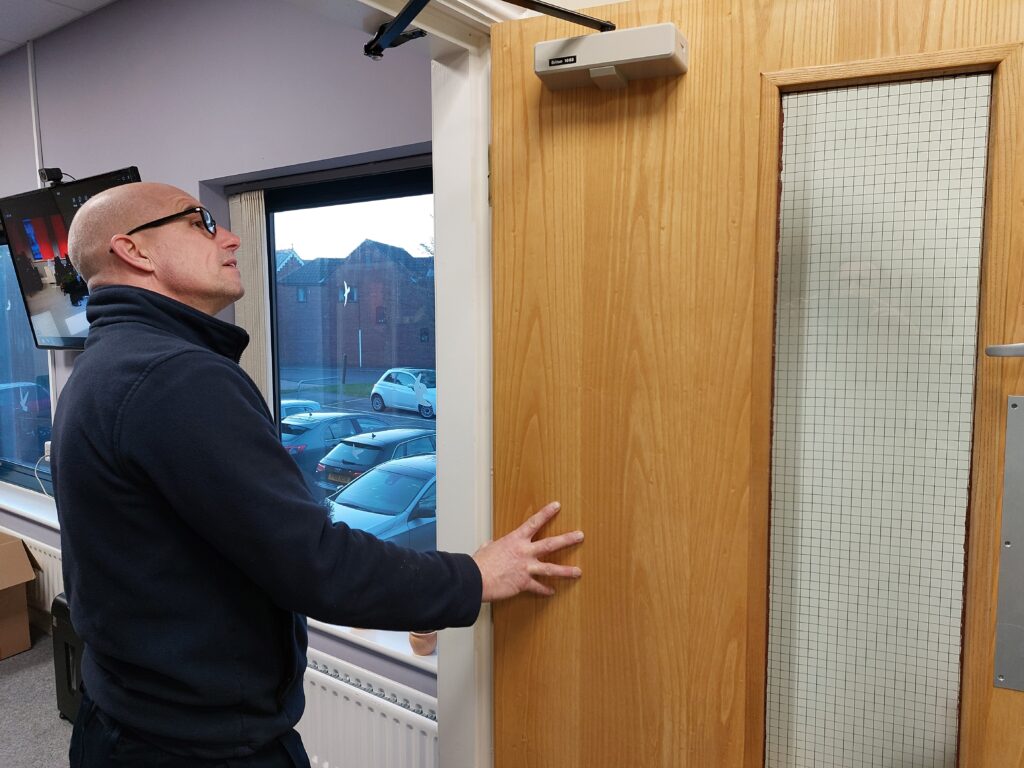
Maintenance on any fire door is critical. However, in places like care homes, they rely heavily on phased evacuations. Therefore, it is paramount that fire doors in care homes are maintained in good working order, including all appropriate hardware. Ensuring that the fire door is able to provide the vital 30 or 60-minutes allows residents a better chance to evacuate safely. This may be under their own ability or with the aid of specialist equipment and support from staff members.
Maintenance of a fire door, usually starts with a fire door inspections. These inspections must completed by qualified inspectors and should be performed annually. Functionality checks must be performed every 6 months by a Competent Person. For some residential environments, which have two or more floors, fire door checks should be performed every 3 months.
How to do the functionality checks
It is critical to ensure that your fire doors are fit for purpose. Follow these simple steps to perform a functionality check:
- Identify the door is fire rated.
- Check the gaps and seals around the door for damage or breakage.
- Inspect the hinges and the door closer. Testing their functionality.
- Ensure that the door is clearly marked with correct signs on both sides of the door.
- Assess any and all fire door retainers or free-swing door closers. Ensure that they are installed and work correctly.
If any of the door or installed hardware are damaged, broken, or even missing, your fire door is not fit for purpose and the component should be replaced immediately. Use our handy fire door inspection checklist to guide you through the process, ensuring that you do not miss or overlook a vital component.
It is a legal requirement to maintain any and all fire safety equipment, including fire doors. This is in accordance with the Regulatory Reform (Fire Safety) Order 2005 which states fire safety equipment must be kept in ‘good working order’. Failure to maintain all your fire safety equipment, could result in fines, or even permanent closure of your business. According to the RRFSO, fire risk assessments must be carried out in any business and organisation. This must be performed by a Responsible Person or Fire Risk Assessor. All fire safety risks are assessed, a plan of action created, and actioned within the premises.




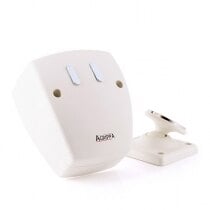
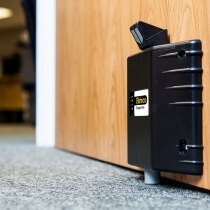



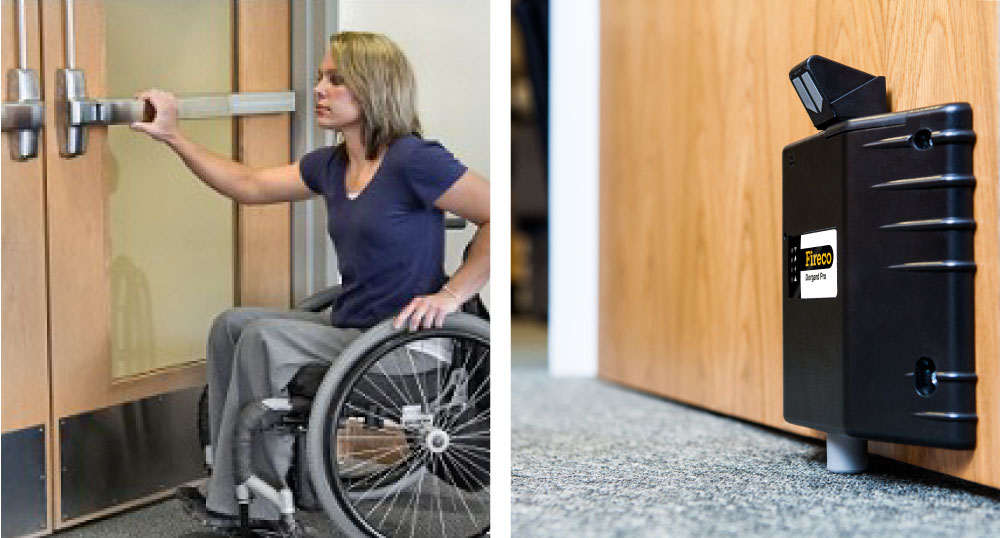

 Fire safety company Safelincs operates a website called
Fire safety company Safelincs operates a website called